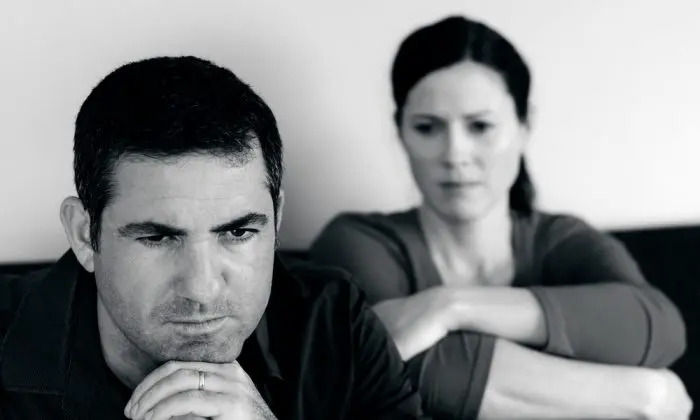Have you ever noticed how much time you spend thinking about negative or painful situations, ruminating and replaying what’s not working in your life?
It’s not just you. The last statistic I read claimed that 80 percent of our thoughts are negative and 95 percent are repetitive. Strangely, the more negative an experience, the more we return to it. Like vultures to a carcass, we’re drawn to what hurts.
We return to our suffering because, fundamentally, we’re trying to make the negative experience come out a different way.
Our mental replays are attempts to re-script what we don’t want into a new reality. If we can just understand our pain more clearly, spend more time with it, we’ll be able to figure it out and make it go away. If we can know the cause, who’s to blame, and what needs to be done about it, we’ll be okay.
We hold onto our pain, paradoxically in an effort to figure out how to let it go.
With pain or any sort of negative experience comes a host of uncomfortable feelings. In response to the feelings we don’t want to feel, our mind takes control and steers us in a more familiar direction. Over and again, the mind restructures and reframes the contents of our pain in an effort to avoid directly feeling it.
The mind always will choose to think about pain rather than experience it directly.
So we counterintuitively cling to suffering as a way of taking care of ourselves. Continually thinking about what has hurt us helps us feel like our pain matters, that it didn’t happen for no reason, and that it won’t be forgotten.
Our ruminations award our suffering importance and value, which it doesn’t always receive from those it wants it from. To stop revisiting our pain can feel like abandoning it, moving on before it’s truly been heard or taken care of.
As a result, we’re reluctant to let it go, even when it’s no longer useful or active. To do so would be to lose touch with who we believe we fundamentally are.
If we didn’t keep reminding ourselves of our story, we might forget who we are in our minds, and then what? Who would we be and what would life look like if we didn’t relate from an already formed idea of who we are?
At an existential level, returning to our suffering allows us to feel a primal sense of I-ness, to feel that we exist. We experience ourselves as a distinct self when we’re thinking about a problem. With a problem in its craw, the mind can feel alive and working. And because we imagine ourselves to be synonymous with mind, our sense of self is also alive and strong in this process. It is actually through the process of thinking that we create a sense of self; we literally think ourselves into existence.
To give up ruminating over problems feels threatening at a primal level. How would we know that we were here if we didn’t keep engaging the mind the very activity that allows it to feel itself? What would happen if we stopped remembering and reestablishing who we are all the time? Without an agenda of what needs to be fixed, we literally lose our separateness from life.
Solutions:
1. Awareness
The key to breaking any habit is awareness.2. Acknowledge That You’re Caught
When you notice that you’re down the rabbit hole in your story of suffering, take a moment and acknowledge that you’re there, that you’re caught. Say it out loud, “Wow, I’m really caught.” “I’m really doing this to myself right now,” or whatever words fit. Stop for a moment and—with kindness—be with yourself exactly where you are. Acknowledge the truth of feeling powerless or stuck inside your pain story.3. Inquire
Ask your mind (without judgment) what it’s hoping to accomplish in luring your attention back to your suffering. Is it to figure out your problem, make it come out a different way, make your pain feel heard? Do you need to remember the pain to protect yourself from it happening again? Is it scary to just feel good? Does remembering your problem ground you?Get curious about your mind’s intentions: Does the rehashing and ruminating lead you to peace? Does it make you feel better?
4. Shift Your Focus From Thinking About the Problem to Actually Feeling It
Sense where and how in your body, through what sensations, you are experiencing this pain story. You can place your hand on your heart as you do this and offer yourself some kind words, perhaps even a prayer of healing for this suffering. Unhook from your head story and drop into a body-felt experience.5. Say ‘No’ or ‘Stop’ Out Loud
We can learn to just say “no” to our mind’s inclinations just as we say “no” to a child who’s doing something that will harm her. Sometimes a wiser and more evolved part of us has to step in and put a stop to the harmful behavior the mind is engaged in. Say “no” or “stop” out loud so you can hear and experience it directly through your senses, rather than as just another thought inside the negative-addicted mind.6. Ask Yourself, What’s at Risk if You Let Go of Your Pain?
Investigate what feels dangerous about living without reminding yourself of what’s happened to you and what’s still wrong. Make the active choice to not fill your now with the past. Be bold: Create a new identity that’s not pieced together from your personal narrative, but always fresh and endlessly changing.In the process, you will discover that you can be entirely well and happy at this moment without having to go back and make anything that came before it different.






